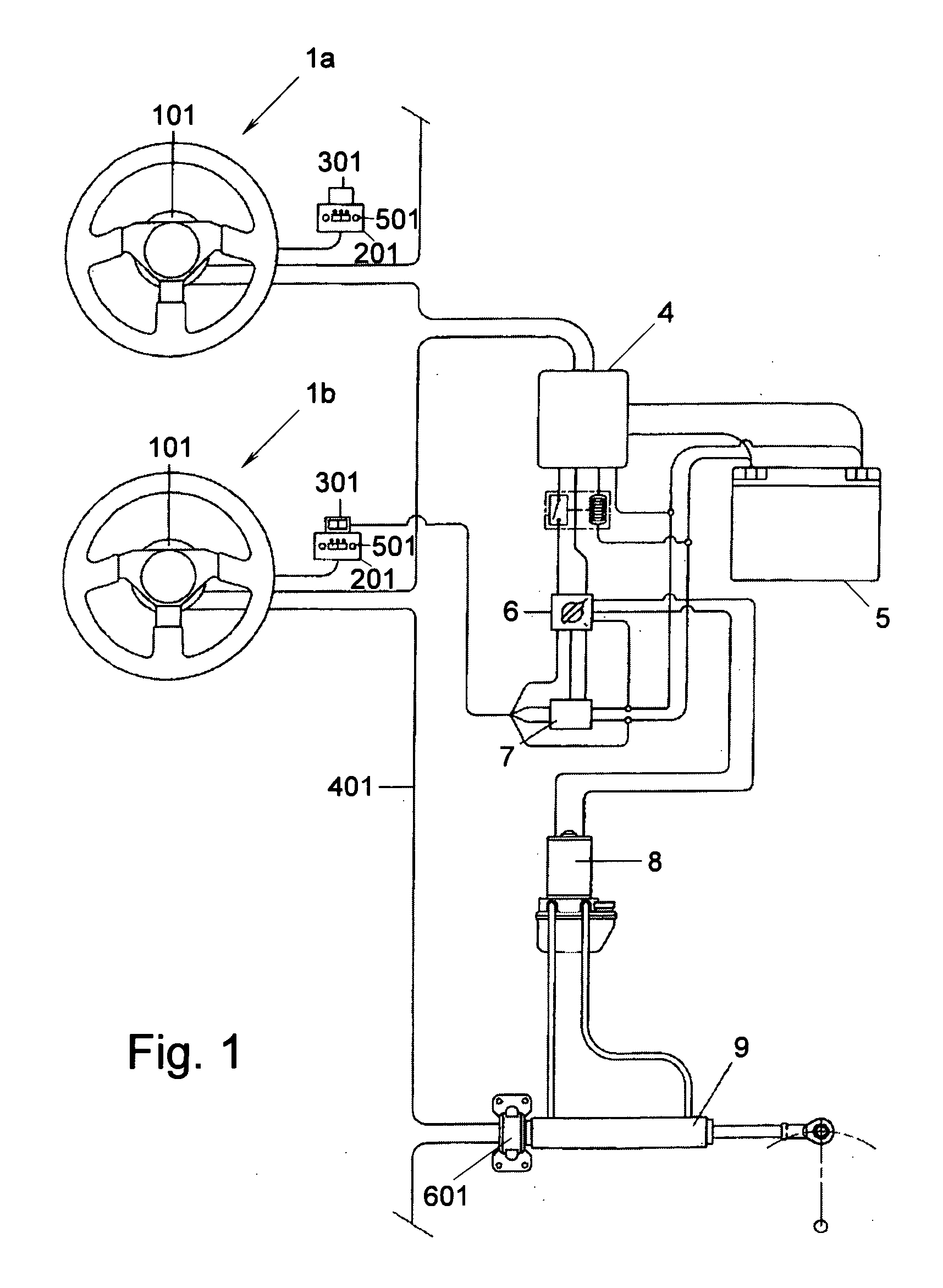Directional control system and method for marine vessels, such as ships and the like
a directional control system and marine technology, applied in the direction of position/direction control, steering components, floating buildings, etc., can solve the problems of secondary steerage stations, complex addition of additional components, and directional control systems in the prior, so as to achieve the effect of high cost, reduced cost, and more complex tasks
- Summary
- Abstract
- Description
- Claims
- Application Information
AI Technical Summary
Benefits of technology
Problems solved by technology
Method used
Image
Examples
first embodiment
[0080] Means for inputting data or commands, shown in the first embodiment as a control panel 501, are also connected to one input point of rudder unit 201.
[0081] A control and processing unit 4 is connected to the device that actuates the steering mechanism and comprises a control unit that regulates the power supply to an electric motor driving a hydraulic pump 8. Such hydraulic pump is part of a closed hydraulic circuit that supplies a double-acting hydraulic actuating cylinder 9. Control and processing unit 4 may have a structure similar to rudder unit 201, and may comprise a feedback unit connected to hydraulic cylinder 9 which generates and transmits on communication line 401 a signal indicating the actual angular position of the steering mechanism. Such feedback unit preferably comprises a sensor that detects the position or stroke made by hydraulic actuating cylinder 9 and that provides a signal to a control and processing unit 601. The latter generates the feedback signal c...
second embodiment
[0179]FIGS. 5 and 6 show an electro-hydraulic steerage according to the present invention.
[0180] The second embodiment may comprise a single control station, as shown in FIG. 5, or two control stations as shown in FIG. 6. Contrary to the first embodiment, the directional control element, that is, the steering wheel 101 connected to the rudder, is provided in combination with an angular position sensor, preferably an encoder 30. Such encoder 30 is composed of an optical movement sensor able to generate a pulse every 2 degrees of rotation and of a digital direction discriminator.
[0181] As can be seen in FIG. 7, the encoder comprises a shielding disk 130 that is mounted coaxially to the steering wheel 101 and that can be rotate with said steering wheel 101. Along a predetermined circumference, the shielding disk 130 has a row of through slots 230 having the same shape and span. Slots 230 have the same angular width and are alternated with full areas having the same angular width.
[018...
PUM
 Login to View More
Login to View More Abstract
Description
Claims
Application Information
 Login to View More
Login to View More - R&D
- Intellectual Property
- Life Sciences
- Materials
- Tech Scout
- Unparalleled Data Quality
- Higher Quality Content
- 60% Fewer Hallucinations
Browse by: Latest US Patents, China's latest patents, Technical Efficacy Thesaurus, Application Domain, Technology Topic, Popular Technical Reports.
© 2025 PatSnap. All rights reserved.Legal|Privacy policy|Modern Slavery Act Transparency Statement|Sitemap|About US| Contact US: help@patsnap.com



